The customer experience can make or break a business. In the age of the internet and social media, word of mouth spreads pretty fast – and can lead to a boom or a boycott depending on what their customers have to say.
This is where customer experience (CX) technologies like AI-powered chatbots, customer feedback software, and personalised marketing platforms come in.
Artificial intelligence can quickly provide a satisfactory response to the most frequently asked questions (FAQs), analyse large volumes of customer data, and even segment customers according to characteristics for better targeting.
This frees up human agents to handle complex and novel inquiries, and to develop more singular ways of making each customer feel valued.
Hence, many businesses combine the efficiency of AI with human elements to get ahead of their competition with considerable success.
In this article, we will review the top CX technologies that successfully helped businesses increase their customer satisfaction (and their bottom line as a result) in 2024.
But first, let’s dive a little deeper into the overall impact CX can have on your business.
The Importance of CX in Driving Sales Growth
Businesses that offer great customer experiences attract a loyal customer base.
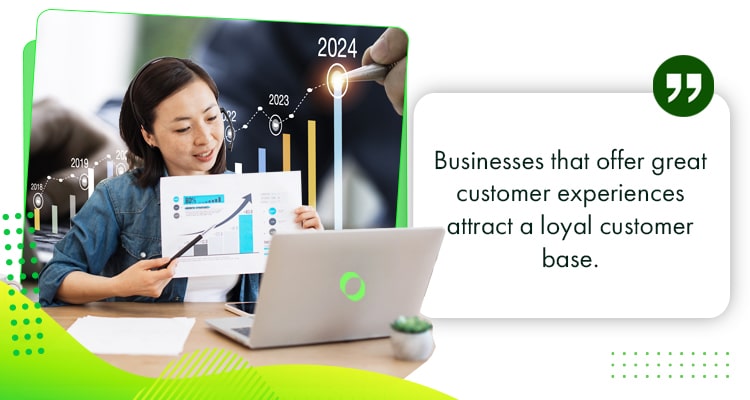
Smooth, personalised, and engaging interactions build stronger emotional connections with customers – making them more likely to come back, and in some cases, taking others with them.
How CX Impacts Customer Loyalty and Retention
Customer experience directly shapes how customers feel about a brand. Here’s how:
- Personalised Experiences – Customers feel valued when businesses customise products, services, and communications to meet individual needs. This builds a deeper connection to the brand and increases loyalty.
- Seamless Journeys – Customers also appreciate easy navigation, fast checkout, and efficient problem-solving. The easier it is for your customers to get what they want and/or need, the harder it will be for your competitors to get their attention.
- Multi-Channel Engagement – CX technologies ensure a consistent experience across all channels (website, app, social media, etc.), allowing customers to engage with the brand, wherever and however they choose and still get the same results.
Successful businesses prioritise customers in every decision. While traditional businesses build their strategies around their products, progressive brands favour customer-centric strategies, and with good reason, as the next section will demonstrate.
The CX Effect: How Putting the Customer First Boosts Your Bottom Line
In what specific ways does strong CX contribute to overall profitability?
- Enhanced Customer Retention – Positive experiences encourage customers to come back. Loyal customers are more likely to make repeat purchases, and businesses stand to gain more from repeat customers than first-time buyers.
- Increased Referrals and Word-of-Mouth Marketing – Satisfied customers often share their experiences with friends and family. Many also post about it on their social media accounts, resulting in substantial engagement.
This organic promotion leads to new customers, increasing sales without additional marketing costs. - Higher Average Order Value – Customers who had a positive experience are more likely to buy more products and services. For instance, a customer who received good customer service from an airline is likely to book more flights with the same airline for future trips.
Top CX Technologies That Drive Sales in 2024
Innovative and affordable CX tools for small businesses have enabled organisations to create personalised, seamless interactions with customers at every stage of their journey.
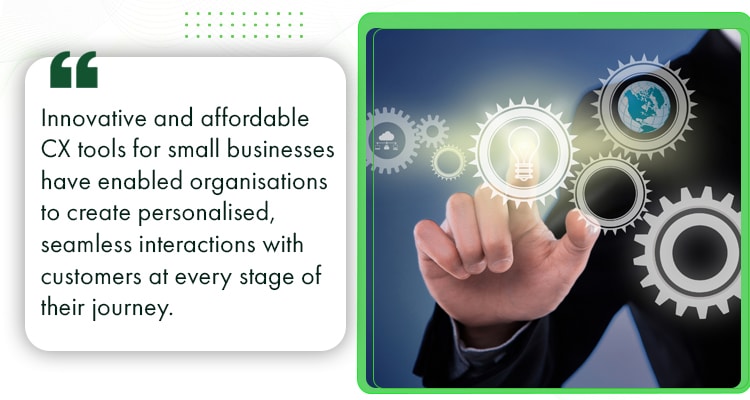
Let’s explore some CX technologies that enhanced customer engagement and increased revenue in 2024:
Artificial Intelligence (AI) and Chatbots
Providing 24/7 customer service can be challenging, especially for small business owners who can’t afford to hire round-the-clock human agents.
Fortunately, chatbots can streamline customer service by handling FAQs even in the wee hours of the morning. This improves response times and reduces the need for 24/7 human support.
AI’s Role in Personalising Customer Interactions
AI-powered chatbots can have real-time conversations with customers- and can even address them by name. They can answer questions, offer support, and suggest products based on past purchases or browsing history.
AI chatbots also learn from each interaction. They get better at giving accurate and relevant responses over time. With this setup, human agents can step in to handle more complex issues after AI chatbots take care of routine inquiries.
How Chatbots Reduce Response Times and Boost Conversion Rates
Unlike human agents, AI chatbots can handle multiple inquiries at the same time. They offer support to several customers in real-time, regardless of the time or the number of requests.
In addition, AI in CX can guide customers through the purchasing process. They can be programmed to give personalised recommendations and answer questions. This streamlined interaction boosts conversions by making customers feel more supported and in turn, confident in their buying decisions.
Impact on Cart Abandonment and Customer Retention
Many customers add items to their online shopping carts but don’t complete their purchases due to indecision, distraction, or a lack of assistance. Fortunately, chatbots help solve these issues by engaging customers at key moments in their shopping journey.
For example, if a customer hesitates–such as lingering on the checkout page or leaving the site–a chatbot sends a message saying, “We noticed you left something in your cart,” along with a button that says something like “Complete Your Order.”
This encourages the customer to complete their purchase, especially if the chatbot mentions that the item is selling out quickly.
Customer Data Platforms (CDPs) for Unified Insights
Aside from artificial intelligence and chatbots, businesses also use customer data platforms (CDPs) to improve customer experience.
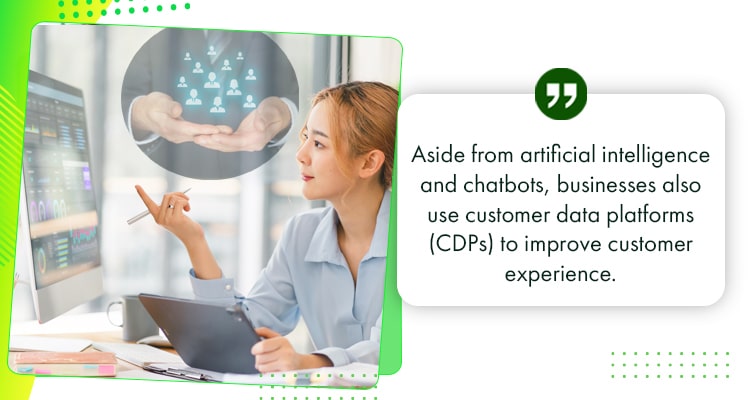
CDPs create a unified customer profile by combining information like demographics, behaviours, and interactions across different channels. This enables brands to offer more personalised and relevant interactions.
Integration of Customer Data for Personalised Experiences
CDPs consolidate data from websites, mobile apps, Customer Relationship Management (CRM) systems, email campaigns, and social media, CDPs to create a comprehensive view of each customer.
This holistic understanding allows businesses to segment their audience based on customer preferences, allowing brands to tailor marketing strategies to specific groups.
Real-World Examples of CDP Success in Boosting Sales
The following brands have successfully increased their sales with the help of CDP tools:
- Qantas Airlines – Qantas, Australia’s flag carrier and largest airline, needed a way to connect the dots from the data gathered from its loyalty programs, website interactions, and booking systems.
Using a CDP, Qantas personalised flight offers and promotions, improving cross-sell opportunities. This led to a reported profit of AUD 1.25 billion.
- Suncorp Group – Suncorp, one of AU’s largest financial services companies, offers insurance and banking solutions. With its wide range of products, it uses a unified system to collect data from its different divisions.
With a CDP, Suncorp created comprehensive customer profiles, enabling personalised up-sell opportunities across its services. By August 2024, the company reported a nearly 14% increase in gross written premium (GWP), reaching AUD 14.1 billion.
- MECCA Brands – MECCA, known for its curated luxury suncare and skincare products, has over 100 stores in AU and New Zealand. As a leading beauty retailer, it aims to improve customer experience across both online and in-store touchpoints.
MECCA uses CDPs to combine offline and online customer interactions, delivering personalised offers based on customer preferences, behaviours, and purchase history. This has helped boost revenues to over AUD 688 million.
How CDPs Enhance Targeted Marketing and Customer Segmentation
Customer data platforms provide businesses with a comprehensive view of their customers through:
- Advanced Segmentation – CDPs can combine data from website interactions and social media platforms to understand individual customer preferences and behaviours.
- Improved Customer Engagement – Targeting the right audience with personalised messages helps businesses increase customer engagement and satisfaction.
- Real-time Insights – CDPs provide real-time updates, enabling brands to adjust their marketing strategies. This responsiveness enhances customer loyalty and leads to higher conversion rates.
Augmented Reality (AR) for Immersive Shopping Experiences
Unlike virtual reality which creates a fully immersive digital environment, augmented reality (AR) blends digital elements with the physical world. This lets users interact with both real and digital objects in real-time, resulting in engaging experiences.
AR’s Role in Enhancing Product Visualisation
As AR becomes more accessible, retailers are also using this technology to stand out in a competitive market. Cosmetic brands, for instance, let customers try hundreds of makeup products with their virtual try-on features.
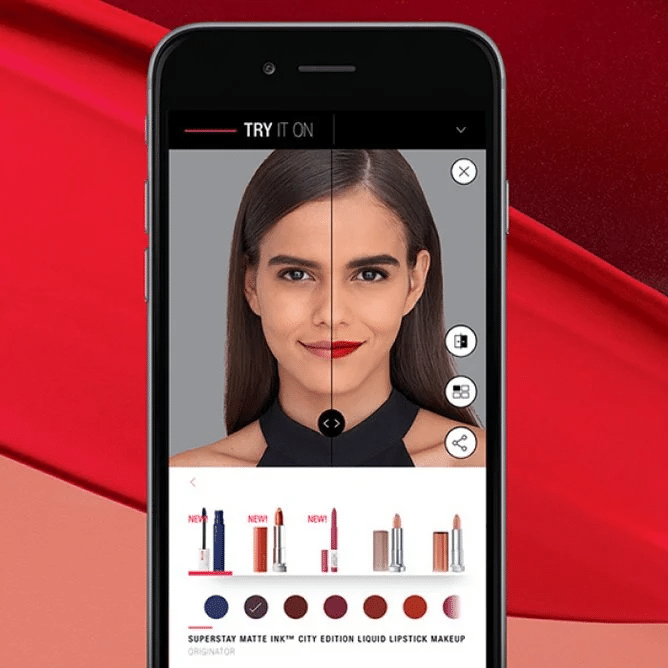
By offering unique and interactive experiences like these examples, brands can better engage their target markets and increase customer satisfaction.
How AR is Transforming E-Commerce and Reducing Return Rates
Augmented reality enables customers to try on products virtually. By providing a way to visualise how the items would look in real-time (e.g., clothes, makeup, etc.), customers will make better purchasing decisions when shopping online.
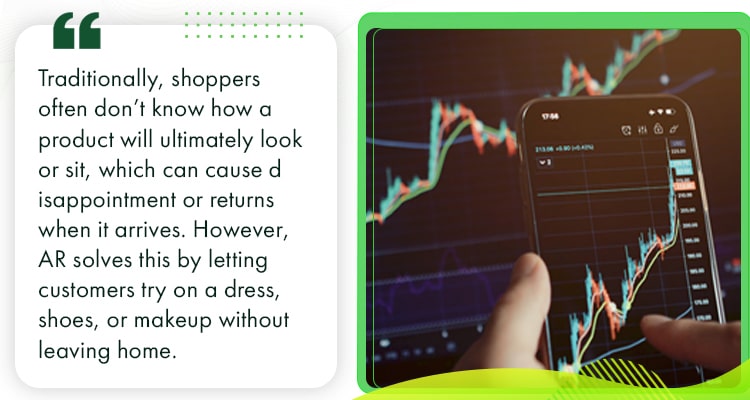
Traditionally, shoppers often don’t know how a product will ultimately look or sit, which can cause disappointment or returns when it arrives. However, AR solves this by letting customers try on a dress, shoes, or makeup without leaving home.
This visualisation better informs online purchasing decisions, lowering the chances of dissatisfaction and returns.
Case Studies Showing Increased Engagement and Impulse Purchases
Several brands in Australia have successfully used AR in their marketing. Let’s take a look:
- Bunnings Warehouse – Bunnings, Australia’s leading home and lifestyle retailer, launched an AR product viewing app in 2020 to help customers visualise their ideal outdoor space.
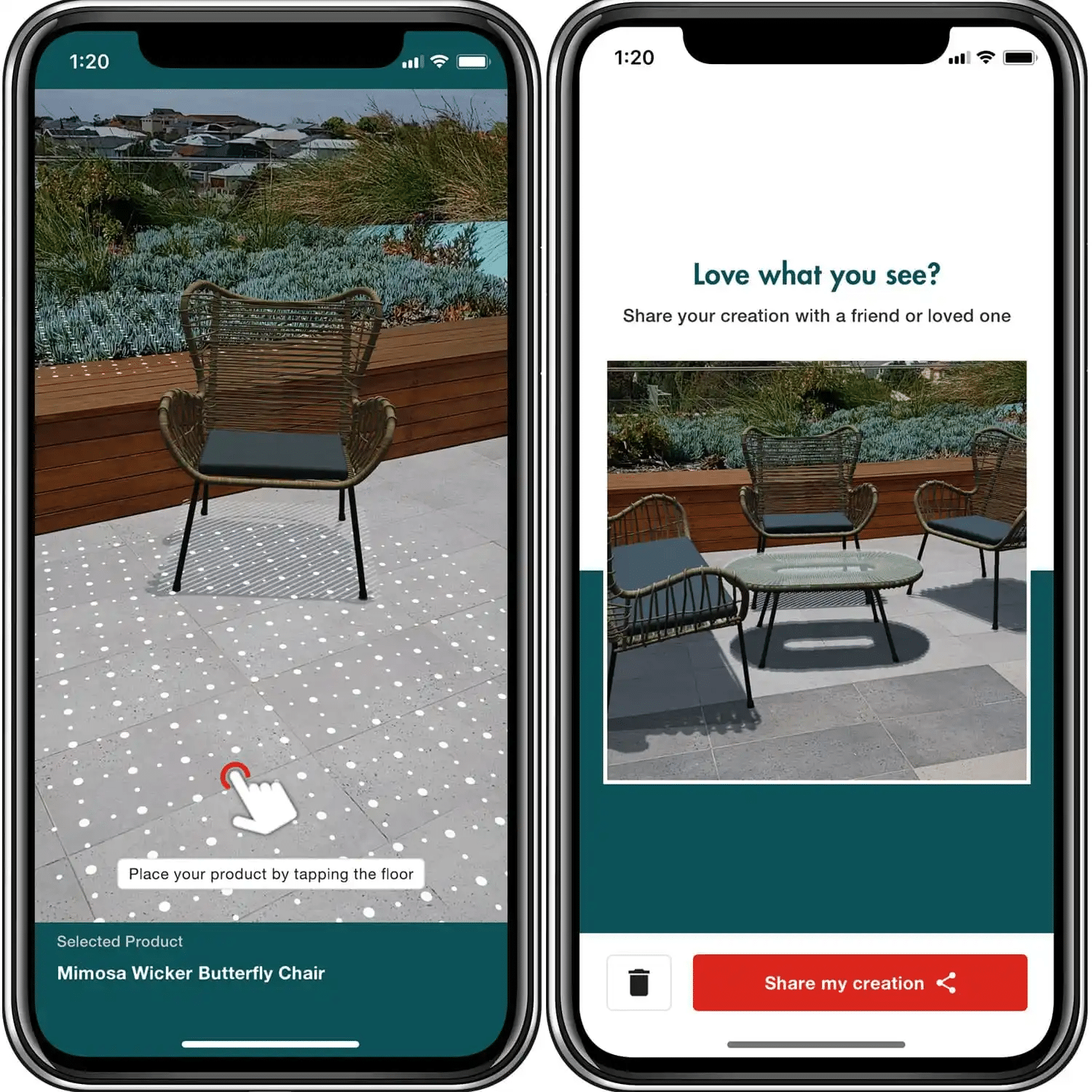
The app allows users to place 3D models of furniture and accessories, like rattan chairs, table settings, pizza ovens, and outdoor lounges, into their outdoor spaces. This led to increased cross-selling opportunities, as customers added more items to their carts.
- Telstra – Telstra, Australia’s largest mobile network, partnered with tagSpace to deliver key information, directions, and updates through smartphones and its 5G mobile network.

5G’s bandwidth allows users to add live data to augmented reality. In addition to tagging places of interest, it can show transport times at bus stops, upcoming acts at festivals, or video content at tourist landmarks to bring local stories to life.
- Cotton On – Cotton On, an Australian retail company known for clothing and fashion, launched AR features in 2014, allowing customers to bring store windows to life.
With AR, users can unlock video content that reveals promotional offers and discount codes for in-store purchases at a lower price.
Predictive Analytics for Proactive Customer Engagement
Predictive analytics help businesses anticipate customer needs by analysing purchase patterns, browsing habits, and demographic data to predict future actions.
In other words, predictive analytics uses data from past actions to forecast future events. This helps brands make better decisions, like offering products or services that customers are likely to want.
Using Predictive Analytics to Anticipate Customer Needs
With the right data, businesses can boost brand loyalty and enhance customer satisfaction. Here’s how:
- Data Collection – Businesses collect data from purchase histories, customer feedback, website interactions, and social media activity which will serve as a foundation for analysis.
- Pattern Recognition – Advanced algorithms then analyse the collected data to identify trends and patterns in customer behaviour, such as buying patterns or frequent product combinations.
- Customer Segmentation – Predictive analytics enables companies to group customers based on their behaviours or preferences. This segmentation helps brands tailor their marketing strategies to meet specific customer needs.
- Personalised Recommendations – With this data, businesses can anticipate what customers are likely to want and provide personalised product recommendations or targeted promotions.
- Proactive Engagement – Lastly, predictive analytics tools for sales allows companies to interact with customers at the right moment.
For example, they can send reminders or special offers when a customer is likely to buy, based on past transactions. This proactive approach improves the customer experience and increases conversion rates.
How Data-Drive Insights Improve Customer Targeting and Sales Conversions
Data is king, especially in business. With the right information, brands can transform the way they approach customer targeting and sales conversions.
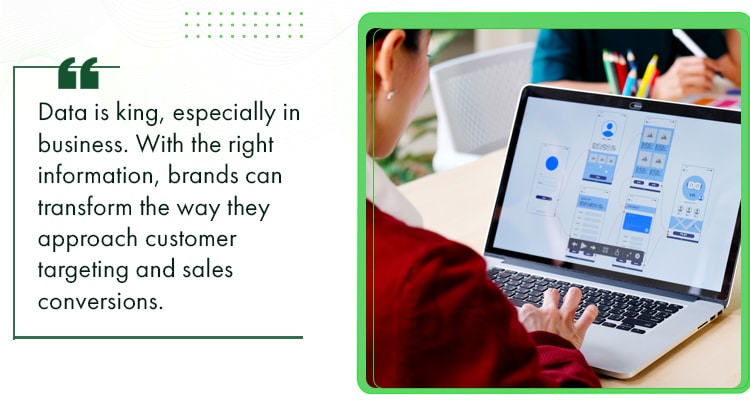
Here’s how:
- Personalised Marketing – Customers are more likely to buy products that match their individual preferences. Thus, personalised emails, product recommendations, and promotions based on past behaviour increase conversion rates as customers feel understood and valued.
- Predictive Targeting – Predictive analytics helps companies identify which customers are most likely to make a purchase. This allows them to focus on high-value leads, maximising the return on marketing investments.
- Real-Time Adjustments – Data-driven insights also allows brands to adjust campaigns in real-time based on performance metrics. This agility improves results, allowing companies to refine their targeting on the go.
Examples of Businesses Increasing Revenue Through Predictive Analytics
The following AU companies use predictive analytics to increase their revenue:
- Commonwealth Bank of Australia – CBA is Australia’s largest bank and it uses predictive models to detect fraud, personalise customer offers, and cross-sell financial products.
These fraud prevention measures have saved millions, while personalised offers boosted customer retention. As a result, the company reported a revenue of AUD 27.10 billion, up from AUD 23.7 billion in 2022.
- Woolworths Group – Woolworths Group, an AU multinational known for its retail chain Woolworths Supermarkets, uses predictive analytics to optimise inventory by forecasting demand based on seasonal trends, customer purchase data, and external factors.
Using predictive analytics, Woolworths reduced stock outs and overstock issues, ensuring the right products are available at the right time. This helped boost its revenue to AUD 64.29 billion in 2023.
- REA Group – REA Group operates AU’s leading residential and commercial property websites. It uses predictive analytics to forecast property market trends, such as price changes, demand in specific locations, and future housing developments.
Thanks to data-driven insights, the company has optimised its platforms, leading to higher advertising revenue and subscription sales. As of August 2024, it has reported a 23% growth, with revenue reaching AUD $ 461 million.
Voice Technology and Conversational AI
Many customers don’t like engaging with AI when they need assistance since they perceive it to be cold and robotic. However, AI now has features that enable it to engage in human-like conversations.
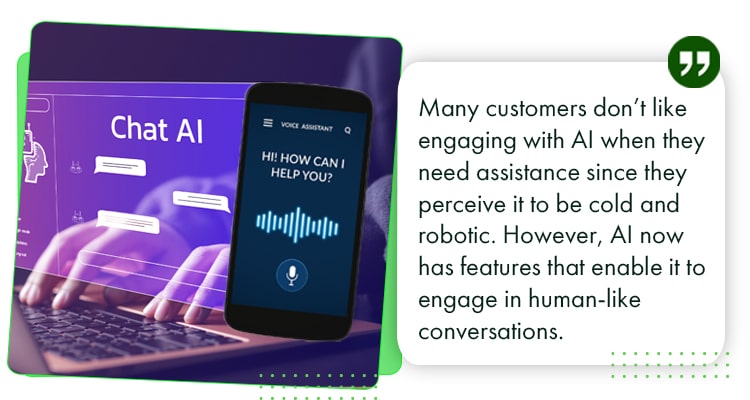
Today, voice technology and conversational AI use natural language processing (NLP), allowing customers to interact with brands through voice commands or text. This improves customer engagement and simplifies tasks like answering queries and managing bookings.
The Rise of Voice Assistants in Customer Service and Sales
Voice assistants are AI software that lets users interact with devices while doing other tasks using voice commands. The most common ones include:
- Amazon Alexa
- Google Assistant
- Apple Siri
- Microsoft Cortana
- Samsung Bixby
- Baidu DuerOS
This shift towards voice-driven interactions meets the growing demand for convenience and speed, allowing customers to get information, place orders, or resolve issues hands-free.
Over time and as the technology improves, voice assistants will increasingly boost customer engagement, loyalty, and revenue, making them vital tools in today’s marketplace.
How Voice-Activated Technology Improves Customer Convenience
Voice technology helps businesses enhance their customer service, thanks to the following advantages:
- Effortless Navigation – Voice commands allow customers to easily navigate websites, apps, or smart home devices. This makes them more user-friendly, particularly for individuals with physical disabilities like blindness or limited mobility.
- Personalised Experiences – Voice technology can recognise individual user preferences and past interactions, enabling it to offer customised support and recommendations.
- Hands-Free Interaction – Lastly, voice-activated systems let users multitask. For example, customers can place orders or search for information while cooking or driving, allowing them to manage other tasks safely and without interruptions.
The Role of Conversational AI in Automating and Enhancing Sales Interactions
Conversational AI plays a crucial role in enhancing sales interactions. When used effectively, it can transform the sales landscape in several ways, including:
- Automated Responses – Conversational AI can handle routine inquiries and common questions, reducing the workload for sales representatives and allowing human agents to focus on more complex sales tasks.
- Data Collection and Analysis – AI systems can also gather valuable insights from customer interactions, helping sales teams understand customer needs, preferences, and pain points.
- Enhanced Follow-Up – AI can automate follow-up messages and reminders, ensuring potential leads are engaged. This keeps the sales process moving and increases the likelihood of closing deals.
What Defines a Leading CX Technology?
A good customer experience technology connects different customer interactions to create a seamless, personalised experience across all channels. It should also have strong data analytics capabilities to offer real-time insights.
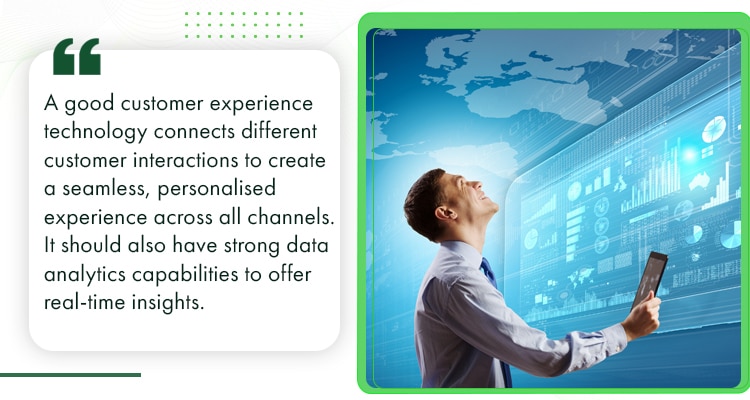
Let’s take a closer look:
Characteristics of Successful CX Technologies
Leading and successful CX technologies share these key characteristics:
- Omnichannel Integration – A successful CX technology connects different customer touchpoints, like web, mobile, in-store, or customer service, to create a unified experience.
- Advanced Data Analytics and AI – CX technologies can predict customer actions and suggest solutions or products, improving the experience by anticipating needs even before the customer thinks of them.
- Personalisation and Customisation – CX technologies provide personalised experiences based on customer preferences, past purchases, and real-time interactions. This leads to more meaningful engagements and higher satisfaction.
- Scalability and Flexibility – They are able to handle more traffic, users, or new products and services without compromising performance.
- Security and Compliance – Successful CX technologies prioritise security with encryption, secure storage, and regular updates to address vulnerabilities.
- Real-Time Monitoring – Advanced CX technologies offer real-time alerts and issue tracking. They also use sentiment analysis to gauge customers’ emotions, allowing for quicker adjustments and more empathic responses.
- Built-in Feedback Mechanisms – CX technologies offer easy ways for customers to share their experiences through surveys, reviews, or direct communication.
- Mobile Optimisation – Successful CX technologies are designed for mobile use with responsive design, user-friendly interfaces, or dedicated apps. This allows customers to access information or resolve issues on their phones.
Omnichannel Support, Personalisation, and AI-Driven Insights
CX technologies also rely on the these key pillars:
- Omnichannel Support – This pillar ensures customers have a seamless and consistent experience across different channels, keeping their journey cohesive and without disjointed interactions.
- Personalisation – By using customer data, companies can offer relevant product recommendations, personalised content, and targeted offers that appeal to individual customers.
- AI-Driven Insights – AI-powered technologies deliver predictive insights that help businesses anticipate customer needs and behaviours. They can thus recommend more suitable products or resolve issues more proactively as a result.
The Importance of Real-Time Customer Feedback
Customers are more likely to repeat purchases when brands are responsive. Therefore, real-time customer feedback is essential for businesses that want to stay competitive by retaining customers and improving their customer experience.
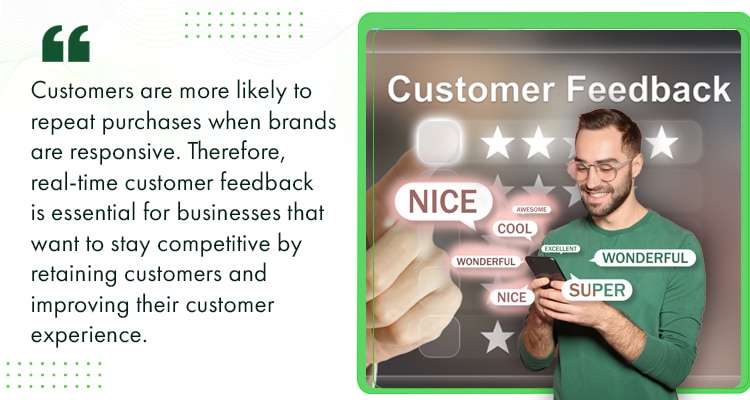
Here’s why:
- Enhanced Customer Trust – Customers feel valued when their concerns are addressed quickly, which builds loyalty and trust.
- Improved Decision-Making – Businesses can adjust more quickly based on real-time feedback, allowing them to respond effectively to customer expectations and market trends.
- Continuous Improvements – Real-time feedback from customers promotes a culture of constant improvement, helping companies stay ahead of their competition.
Frequently Asked Questions (FAQs)
Here are the most frequently asked questions about CX technologies:
#1. How Can Small Businesses Afford to Implement CX Technologies?
CX software for small businesses can be expensive. However, there are several affordable options:
- Cloud-Based Platforms – Many CX technologies are available as cloud-based Software-as-a-Service (SaaS), reducing the need for expensive hardware or infrastructure investments.
- Free or Low-Cost Tools – There are also many affordable customer feedback, chatbot, and CRM solutions available. While they may lack some advanced features, they still provide enough functionality to enhance customer experience and are a good starting point for many SMEs.
- Tiered Pricing Plans – Many CX providers have tiered pricing, making it easy for small businesses to start with basic features and upgrade as their customer base or needs grow.
#2. How Do CX Technologies Improve Personalisation Without Compromising Privacy?
CX technologies use advanced management techniques to balance customer insights with strict privacy protection. Here’s how:
- Data Anonymisation – CX technologies often remove identifiable information while still allowing businesses to analyse behavioural patterns. This allows for personalisation based on trends while keeping sensitive customer information private.
- Encryption and Consent Management – They also use encryption methods to protect customer data from breaches. Additionally, CX platforms use clear consent management tools that give customers control over what they share.
- Regulatory Compliance – Lastly, CX technologies comply with global privacy laws such as the General Data Protection Regulation (GDPR). This ensures that businesses use customer data ethically and legally.
#3. How Do CX Technologies Influence the Post-Sale Experience?
CRM systems track purchase history and customer interactions, allowing businesses to send personalised follow-up messages with relevant product recommendations or feedback requests.
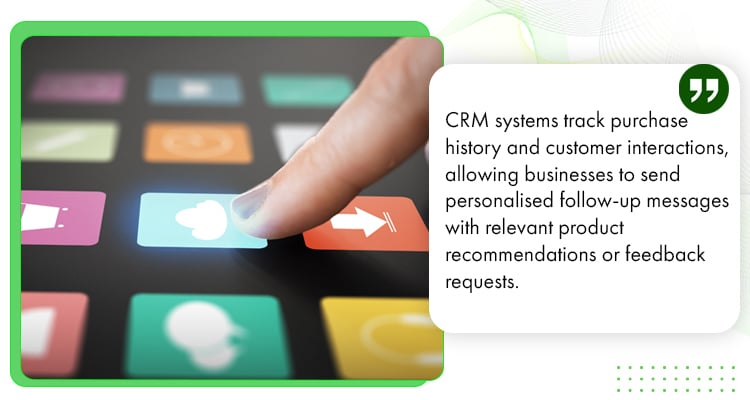
Additionally, real-time feedback tools can be triggered post-sale, allowing businesses to gather customer insights about the buying experience. This helps address any concerns after purchase and improve future services or products.
Lastly, CX technologies enable businesses to create targeted loyalty programs or special post-sale offers, encouraging customer retention and rewarding repeat purchases.
Conclusion
Many CX technologies stood out this year for their potential to improve customer interactions and boost business success.
From AI and machine learning to chatbots, virtual assistants, omnichannel platforms, and customer feedback tools, advanced CX solutions have become essential for sustainable sales growth.
Therefore, advanced CX solutions are a worthy investment for any business that wants to increase retention rates, foster loyalty, and encourage repeat purchases come 2025.
Curious how AI works for businesses? Check out these 100 AI prompts to help you get started.
Looking for world-class remote workers for your growing business? Click here.
If you’re ready to experience the full advantages of working with a top global team, check out our 1,000 fully vetted and highly talented staff here.
Syrine is studying law while working as a content writer. When she’s not writing or studying, she engages in tutoring, events planning, and social media browsing. In 2021, she published her book, Stellar Thoughts.




















